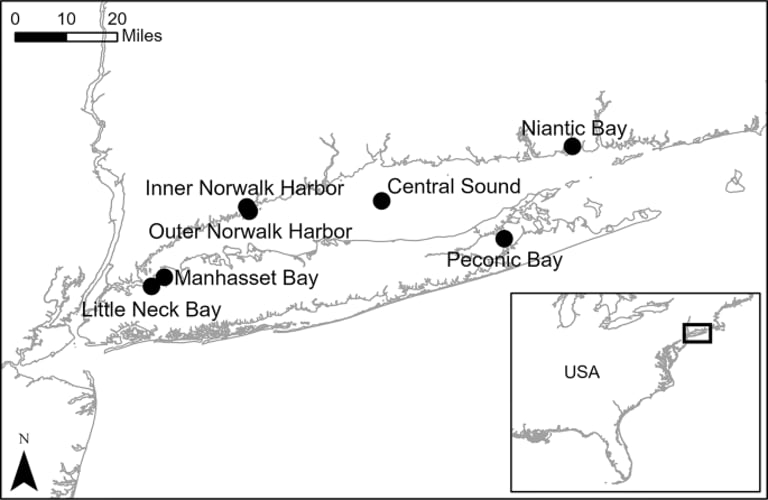Horseshoe Crab Decline in Long Island Sound: New Study Reveals Alarming Trends
August 27, 2025
The Atlantic horseshoe crab population in Long Island Sound is facing habitat loss, overharvest, and climate pressures, and new data from six sites shed light on a regional trend.
Researchers pulled together six datasets from CT DEEP, Millstone Environmental Laboratory, NYS DEC, Harbor Watch, and The Maritime Aquarium at Norwalk to gauge population changes in Long Island Sound, including Peconic Bay.
Sampling methods and data processing are comprehensively described, with data availability posted in supplementary tables.
The study spans multiple locations and sampling designs (trawl and seine) across Central Sound, Niantic Bay, Peconic Bay, Inner Norwalk Harbor, Outer Norwalk Harbor, and Manhasset/Little Neck Bay, using Gamma GLMs to analyze counts per gear.
Counting and site-specific slopes are evaluated to compare trends across locations, ensuring a robust cross-site assessment.
Across six sites, there is a significant overall decline in horseshoe crab counts, with several sites showing substantial negative trends and annual declines ranging roughly from 2.9% to 9.3%.
Demographic shifts show a higher proportion of females in Central Sound and a larger mean prosomal width there, with weight per tow rising before 2019 and more small crabs appearing at higher counts.
The Central Sound data hint at a possible positive trajectory since 2019, but overall declines persist; there are concerns about sex ratio changes and reproduction, while policy context includes bait harvest restrictions in CT and NY and consideration of Endangered Species Act listing.
The broader implications call for stronger protections, more regional data, and targeted research on reproduction and juvenile stages to reduce uncertainties arising from methodological differences and cross-border jurisdictions.
Summary based on 1 source
